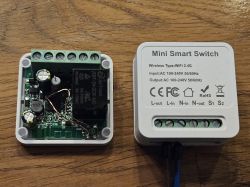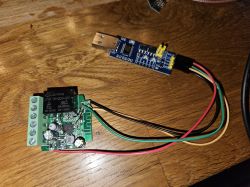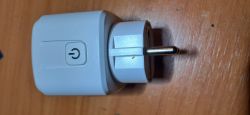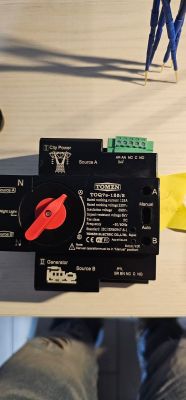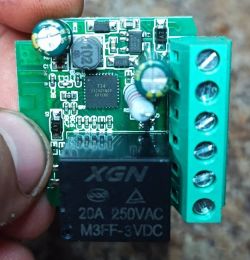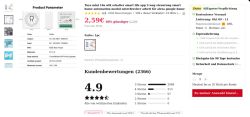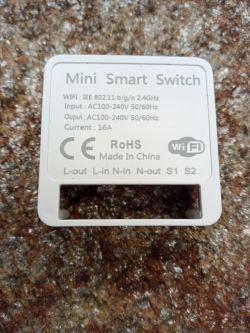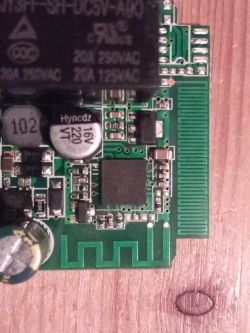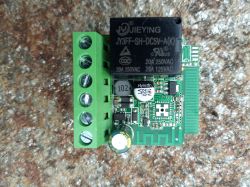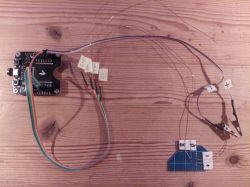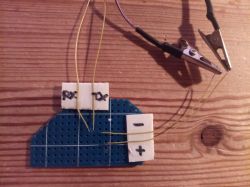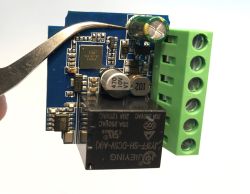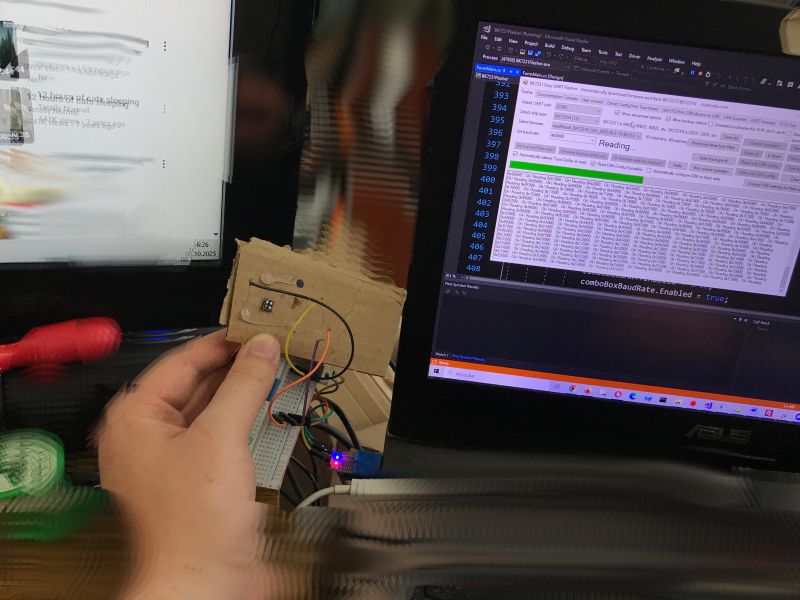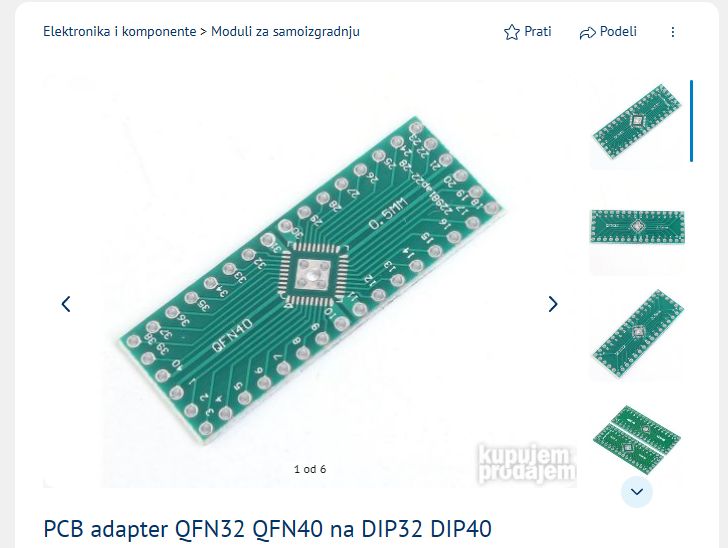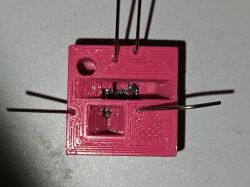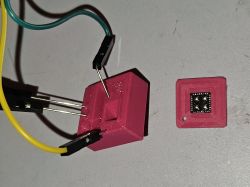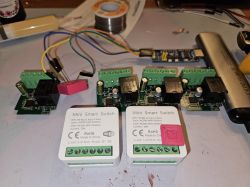FAQ
TL;DR: Flashing T34/BK7231N mini switches is doable: 3 key pins mapped (LED=8, BTN=10, RELAY=26). "That worked amazingly!" [Elektroda, woessner, post #21732349]
Why it matters: This FAQ helps DIYers quickly pick a working flashing path, pin map, and safe handling steps for T34-based mini switches.
Quick Facts
- Street price seen as €2.59 per unit; ideal for bulk tinkering. [Elektroda, sp4rk1e, post #21705064]
- Early unit pin map: LED=6, Switch in=14, Relay=15, Button=24 (BK7231N/T34). [Elektroda, woessner, post #21253441]
- Newer unit pin map: LED=8, Button=10, Relay=26; works with a 3D jig. [Elektroda, woessner, post #21732349]
- TXD accessible on some boards at pad 26; thin copper + 3.3 V verified. [Elektroda, nelliug54, post #21760986]
- Enable power-save to avoid later stability fixes on this board family. [Elektroda, p.kaczmarek2, post #21262684]
What is the simplest way to flash this T34/BK7231N mini switch?
Try Tuya-Cloudcutter first. The original poster stressed this before resorting to the hard-wired method. If Cloudcutter fails, move to UART flashing. This two-step approach saves time and avoids risky soldering on QFN pads. [Elektroda, woessner, post #21253441]
Which pins are mapped on the early Mini Smart Switch revision?
Early boards used: LED=6, Switch input=14, Relay=15, Button=24. This template worked after a direct flash. Use it as a starting point if your PCB matches the photos from that report. "Please try Tuya-Cloudcutter first!!" still applies before soldering. [Elektroda, woessner, post #21253441]
Which pins are mapped on the newer revision seen later in the thread?
A later batch reported: LED=8, Button=10, Relay=26. The contributor aligned spring needles with a printed jig for reliable contact and repeated flashes across units. That fixture reduced risk versus hand-soldering hair-thin wires. [Elektroda, woessner, post #21732349]
Can I flash it with the GUI Flash Tool over UART?
Yes, if you can access the UART pads. The maintainer confirmed GUI flashing works once RX/TX are reachable on your exact board revision. If Cloudcutter profiles fail, switch to UART and proceed. [Elektroda, p.kaczmarek2, post #21513754]
Where is TXD on some T34 boards, and how do I grab it?
On some units, TXD is pad 26. One user bonded a thin copper strip with thermal adhesive, verified 3.3 V with a multimeter, and programmed successfully. They also noted a lithium cell gives cleaner power during flashing. [Elektroda, nelliug54, post #21760986]
What if TX isn’t exposed—am I stuck?
A contributor found every flash signal except TX exposed, calling it “no way to grab this pin except removing the whole chip.” In that edge case, use a fine-pitch adapter or in-circuit jig to avoid lifting QFN pads. [Elektroda, sp4rk1e, post #21705064]
How do I avoid ripping QFN pads when wiring the T34?
Keep wires short, fixed, and strain-relieved. An experienced flasher warned, “It’s easy to tear off the QFN pad when using too large or not fixed in place wires.” A simple adapter or jig helps. [Elektroda, p.kaczmarek2, post #21705190]
Is there a no-solder or low-solder method to program several units?
Yes. A 3D-printed alignment jig with spring needles worked across multiple devices. The user pre-tinned chip pads lightly, pressed the jig to ensure contact, and repeated successful flashes on a batch of five remaining switches. [Elektroda, woessner, post #21732349]
Cloudcutter keeps failing with my Tuya build—what should I do next?
If your selected profile fails, pivot to UART flashing. The maintainer explicitly said GUI flashing is possible once UART pads are accessible. This bypasses profile mismatches while keeping your device recoverable. [Elektroda, p.kaczmarek2, post #21513754]
Do I need to enable power saving after flashing OpenBeken?
Yes. The maintainer recommended enabling powersave on this board family to avoid a later hardware fix. Add a powersave command after first boot to improve stability and reduce idle consumption. [Elektroda, p.kaczmarek2, post #21262684]
What OpenBeken template works on the adapter-based variant?
A shared OBK config set WifiLED=8, Toggle=10, Button=23, Relay=26, plus “powersave 1.” This template booted correctly on the T34/BK7231N board and supports single-channel relay control. [Elektroda, sp4rk1e, post #21705064]
How do I hook up the 433 MHz EV1527 remote on this switch?
One user confirmed the RF receiver’s TX goes to P6 (PWM0). Their remote uses EV1527 framing: SYNC + 20 address bits + 4 data bits. Configure T34 to treat P6 as the RF input and verify clean 3.3 V signaling. [Elektroda, nelliug54, post #21760986]
Is there any firmware/config dump that confirms key pins?
Yes. A posted configuration block shows module=T34 with netled1_pin=8 and rl1_pin=26 among other parameters. Use it to cross-check your pin mapping when templates appear inconsistent across batches. [Elektroda, p.kaczmarek2, post #21714162]
What’s the cost–benefit of these boards for projects?
At about €2.59 each, they are cost-effective for Wi‑Fi relay experiments. Even if flashing fails, one contributor repurposed the board as a compact isolated 3.3 V supply after removing unused parts. [Elektroda, sp4rk1e, post #21714175]
What are Tuya and OpenBeken in this context?
Tuya is the stock platform on these switches; Cloudcutter targets it for OTA exploits. OpenBeken (OBK) is the community firmware used here to replace Tuya on BK7231 devices. OBK templates and commands appear throughout the thread. [Elektroda, sp4rk1e, post #21705064]
How do I flash via UART safely on a T34 board (quick 3-step)?
- Secure the PCB; power at 3.3 V; align a small adapter or jig.
- Connect RX/TX (TXD may be pad 26); enter flash mode; use GUI Flash Tool to write OBK.
- On first boot, set pins per template and run “powersave 1.” [Elektroda, sp4rk1e, post #21705064]
